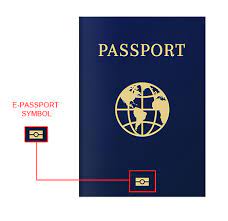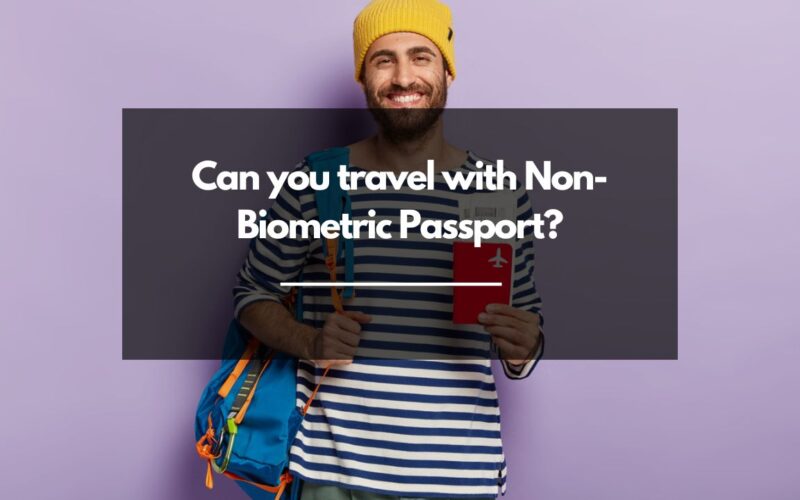As an Amazon Associate, I earn a small commission from qualifying purchases. Learn more about this.
Planning to take off for an international trip? Passports are the first thing that comes to your minds.
But if you’re someone who’s not constantly into travel, or have an older passports (maybe a decade back), you may want to know if yours could work in this modern era of Biometric Passport.
Without further, let’s dive into this article.
Can you travel with Non Biometric Passport?
First, we should clarify what we mean by ‘non-biometric passport’.

Essentially, these are traditional passports without the embedded electronic chip that carries biometric data. So, if your passport is a little older and doesn’t have that small, rectangular symbol on the front cover, it’s a non-biometric version.
Now, onto the question: can you travel with it?
The short answer is generally, yes, you can. There’s no blanket rule saying that only biometric passports are allowed for international travel. Many countries still accept and issue non-biometric passports, especially if they’re still valid and not damaged.
However, this doesn’t mean there aren’t any caveats.
Several countries prefer or require biometric passports for entry. The reason for this is enhanced security.
Biometric passports, with their digitally-encoded personal and biometric data such as facial recognition, fingerprints, or iris scans, are tougher to forge. So, some nations have made them a requirement for incoming travelers.
For instance, the United States introduced rules back in 2007 that visitors coming under the Visa Waiver Program need to hold a biometric passport.
The Enhanced Border Security and Visa Entry Reform Act of 2002 also mandated the use of biometrics in U.S. visas, requiring U.S. Embassies and Consulates abroad to issue “only machine-readable, tamper-resistant visas and other travel and entry documents that use biometric identifiers”
Similar regulations exist in other parts of the world. The trick is always to check the specific entry requirements of your destination country before you travel.
Are there countries where Non-Biometric Passports are Invalid?
While most countries worldwide still accept non-biometric passports, it is essential to acknowledge that the landscape is ever-changing, and rules can vary from one country to another.
Some nations have moved towards accepting only biometric passports due to heightened security concerns.
For instance, the United States. If you’re planning a trip there and you’re a citizen of a country that’s part of the Visa Waiver Program (VWP), the U.S. has required you to have a biometric passport since 2007.
So, if your passport lacks that little electronic chip, you might face some hurdles. The U.S. implemented this change as part of measures to boost border security and to streamline immigration processes.
In Europe, it’s a similar story, especially if you’re a non-European Union citizen.
Several EU countries now require incoming travelers to possess a biometric passport. The United Kingdom, despite no longer being in the EU, has similar requirements.
Japan and Australia are also noteworthy in this context.
They’ve been ramping up their use of eGate systems in airports, which read the data on the chip of a biometric passport.
While they haven’t made biometric passports obligatory, traveling with one can make your journey smoother and faster.
How to get a Biometric Passport
The first thing you need to do is to know exactly what type of passports you have. Biometric? Non biometric? Machine-readable?
Now, if you don’t have a biometric after checking, you can move on.
Gather your documentation.
This usually includes proof of citizenship like a birth certificate, your old passport if you have one, and proof of identity such as a driver’s license.
Make sure all your documents are in order. You don’t want to face any hiccups in this process due to something that could have been easily avoided, right?
Once your documents are ready, it’s time to take your passport photo.
The photo must meet specific guidelines, like a clear white background and a neutral facial expression. No holiday pictures or selfies, please. This photo represents you on an international level, so make sure it’s a good one.
The next step involves filling out the application form. You can usually find these online on your local government’s website.
Be sure to fill out the form correctly and thoroughly. Incorrect or incomplete information can lead to delays. And remember, honesty is key here. The information you provide will be embedded into the biometric chip of your passport.
Then, you’ll need to pay the application fee.
The cost varies from country to country, but expect to pay a bit more for a biometric passport than a traditional one. It’s a small price to pay for enhanced security and convenience.
Finally, submit your application either by mail or in person.
This usually depends on your country’s rules. It can take several weeks for your application to be processed and for your passport to be ready, so plan accordingly.
And voila!
Conclusion
Ultimately, the transition to biometric passports is all about improving global security. But for those holding onto a non-biometric document, you’re likely not to have any problem. It’s all about doing your homework.
Stay informed about the latest regulations, keep an eye on the expiry date, and your non-biometric passport can still be your ticket to the world – at least for now.







